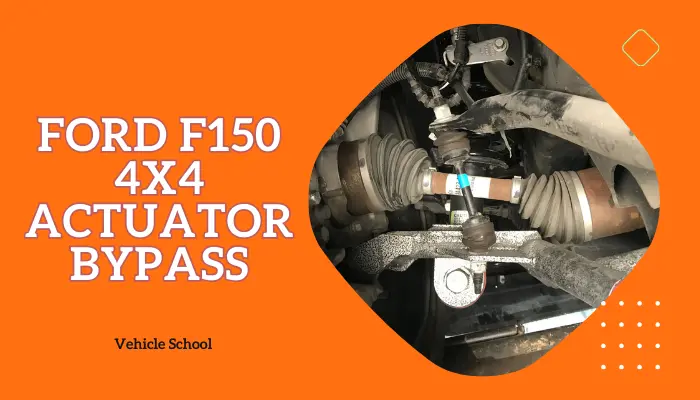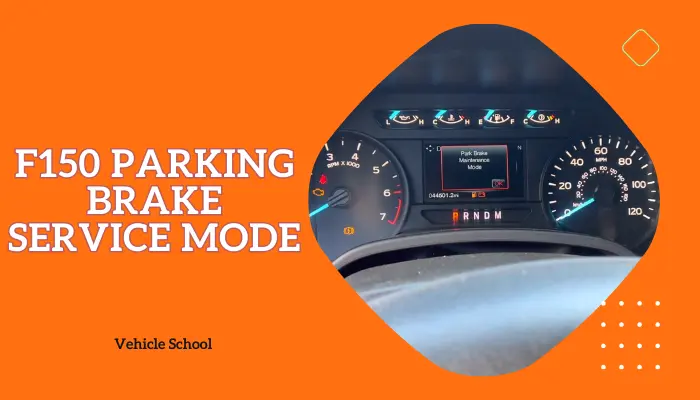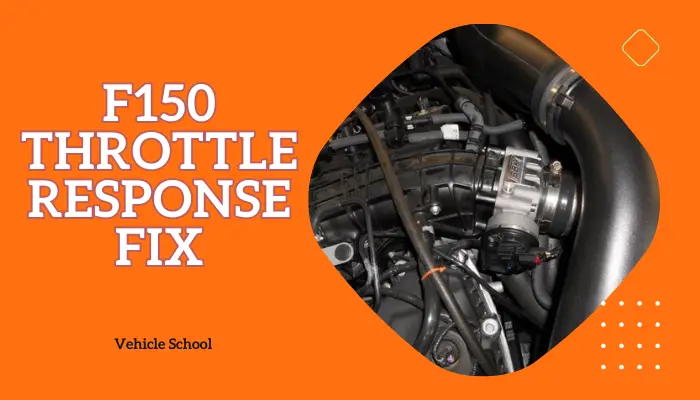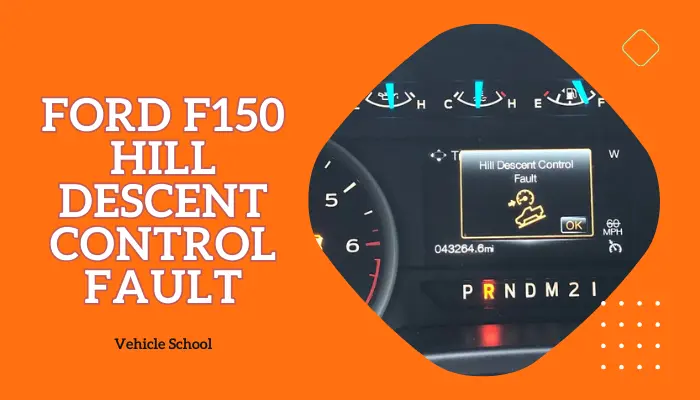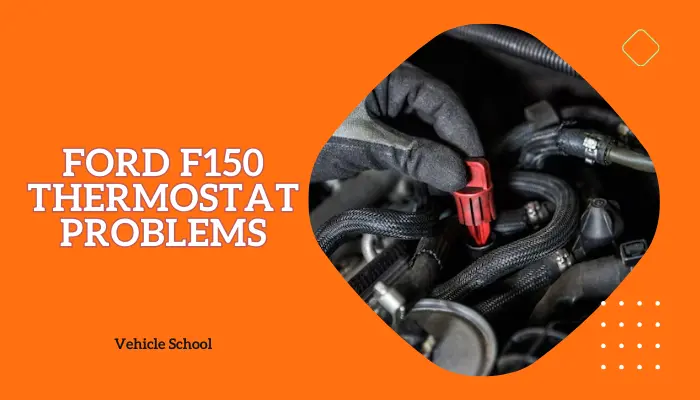Struggling at the pump? If you’re tired of wrestling with your Dodge Ram’s fuel filler neck every time you refuel, you’re not alone.
This annoying issue is a common complaint among Ram 1500 drivers. It happens with all Dodge Rams, even the most recent ones.
I’ll break down why this happens, and give you all the fixes you need. Let’s get started.
What Are the Common Dodge Ram Fuel Fill Problems Reported by Owners?
Dodge Ram 1500 trucks from 2015 to 2022 often have fuel fill problems due to dust in the EVAP canister, blocked vents, or problems with filler neck parts. You can temporarily fix it by adjusting the nozzle or using a low-flow setting. To permanently fix it, you’ll need to replace the EVAP canister, fuel tank, or adjust how deep the filler hose goes in.
Before going any further though, you should check out other pumps if you haven’t. It could just be a problem with the one you normally use.
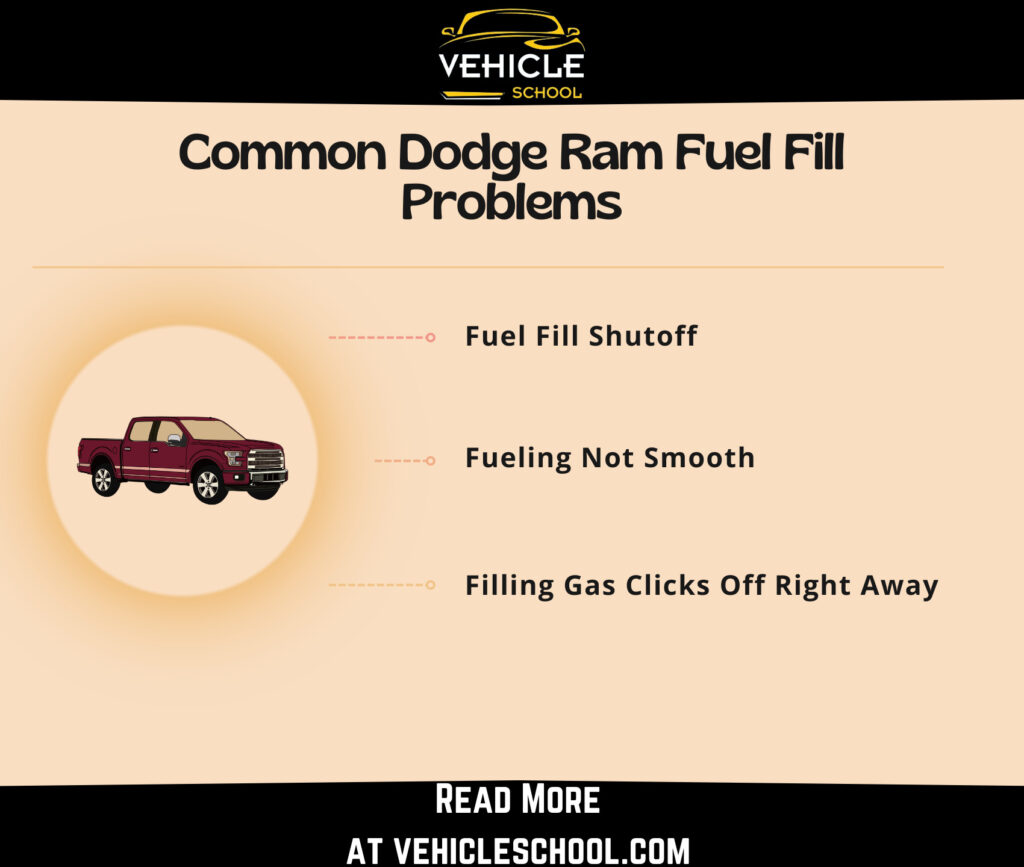
1. Fuel Fill Shutoff
Does your gas pump keep stopping when you fill up? This is the most common issue with Dodge Ram 1500 trucks from 2015 to 2022.
The fuel pump often cuts off too soon, allowing only a bit of fuel at a time. This is usually due to the EVAP canister collecting dust (some models lack vented caps).
A bad fuel tank vent also causes slow filling because it stops air from escaping while you pump fuel. Normally, air needs to get out so fuel can go in smoothly.
If the vent is blocked or there’s a problem with the vent tube or EVAP purge valve, air gets trapped, increasing pressure inside the tank. This pressure makes the fuel pump nozzle think the tank is full, so it shuts off frequently. It’s like a stop-and-go process as the nozzle stops to handle the pressure.
Other issues like a stuck check valve flap at the filler neck or a broken rollover valve can also restrict airflow and worsen the slow filling problem.
Usually, it’s just an issue with the canister, or in rarer cases, with the fuel tank itself.
Temporary Fix For Fuel Fill Shutoff
- Put in the nozzle only partially and hold the trigger at half pressure.
- Rotate the nozzle 90 degrees or completely upside down while fueling.
- Use the pump’s lowest flow setting to prevent the shutoff mechanism from engaging.
- Use a wire hanger to check for and dislodge any blockages in the filler neck.
Permanent Fixes For Fuel Fill Shutoff
Here’s what you can do to permanently fix the issue.
Replace The Evap Canister
- Lift and secure the truck safely.
- Disconnect the negative battery cable.
- Locate and remove the evap canister shield bolts.
- Disconnect hoses and electrical connectors from the canister.
- Remove the old evap canister carefully.
- Install the new evap canister securely.
- Reconnect hoses and electrical connectors.
- Reinstall the canister shield and secure with bolts.
- Lower the truck and reconnect the battery cable.
- Test the system for leaks and functionality before driving.
Swap Out The Fuel Tank
Just replacing the canister should work well enough, but if you still see the issue, try changing the fuel tank. This can also fix the slow fuel fill issue, as the vent is a part of the tank itself.
- Lift the vehicle with a jack.
- Remove the wheel and fender liner.
- Disconnect the electrical harness and fuel filler hose.
- Undo tank straps with 16mm socket.
- Lower tank while supporting it.
- Disconnect the remaining fuel lines.
- Install a new tank and align it.
- Secure the tank with straps and tighten bolts.
- Reconnect harness and filler hose.
- Lower the truck and check all connections.
This is only a gist of the process—if you want to see the whole thing, check out this video:
It applies with newer Dodge Rams, too.
2. Fueling Not Smooth
Some Ram 1500 trucks may not take fuel or spit it back out, alongside also constantly clicking off. The cause is often a wrong fit of the filler hose in the filler pipe. If it’s not deep enough, fuel might not go in right or may splash back.
This messes with how the fuel system handles incoming gas, making it back up or not flow into the tank. The issue stems from how the fuel filler parts are set up and put together.
Fix: Adjust Fuel Hose Insertion Depth
There’s a TSB for this issue, here are the steps to fix according to it:
- Park your car safely and turn off the engine.
- Find and measure how far the filler hose goes into the filler pipe.
- Make sure it’s between 55mm and 61mm (about 2.2 to 2.4 inches).
- Loosen the clamp that holds the filler hose to the filler pipe.
- Adjust the hose so it’s 58mm (about 2.3 inches) deep, plus or minus 3mm (about 0.1 inches).
- Tighten the clamp securely to keep the hose in place.
- Hold the filler tube steady as you adjust to avoid damage.
- Go to a gas station and check if the car fills up properly.
- If it still has trouble, pull the nozzle out a bit while filling.
3. Filling Gas Clicks Off Right Away
A common issue with older model Rams is the gas pump shutting off immediately when trying to fill up, typically caused by a stuck rollover valve inside the filler neck.
This valve, meant to prevent fuel spillage during rollovers, can sometimes fail to open properly when refueling, creating pressure in the filler neck that triggers the pump’s automatic shutoff.
Workarounds:
- Insert a 3/8 hose down the filler neck to manually open the valve before fueling.
- Use a borescope or camera to inspect the rollover valve inside the filler neck.
- Check if the valve opens correctly when fuel is pumped in by gently adjusting it with a tool.
Be careful to prevent any damage or leaks while examining and adjusting the rollover valve. Avoid using tools that could get stuck if the valve opens unexpectedly.
How To Replace Fuel Tank Filler Neck On Your Dodge Ram?
If nothing works, you can also use this as a last resort. Follow these steps to replace the fuel tank filler neck on your dodge ram:
- Lift the vehicle and remove the plastic cover with three T25 screws.
- Loosen and remove the hose clamp securing the filler neck.
- Disconnect the hose from the filler neck.
- Remove the sensor connector and bolts securing the filler neck.
- Extract the old filler neck.
- Transfer components like the breather canister to the new filler neck.
- Insert the new filler neck into place.
- Reattach the sensor connector, bolts, and clips.
- Secure the filler neck with mounting bolts.
- Reconnect the hose and tighten the clamp.
What Is The Recall On The Dodge Ram Gas Tank?
About 287,000 Dodge Ram trucks from 2009-2012 are under recall. This includes RAM 1500 Pickups built between May 28, 2008, and September 7, 2012. The front fuel tank strap might come off because the frame bracket can rust. If the tank strap detaches, the tank could scrape the ground and leak fuel, which can cause a fire if it catches a spark.
Final Thoughts
Fuel leaks around the filler neck are not just messy, they can be dangerous for both you and your truck. So make sure to get things fixed up ASAP.
Doing so can also help get rid of any fuel odors you’re smelling unusually often, even out of the gas station.
And as a bit of parting advice, you could upgrade to a better quality filler neck that doesn’t let dust in as easily.

